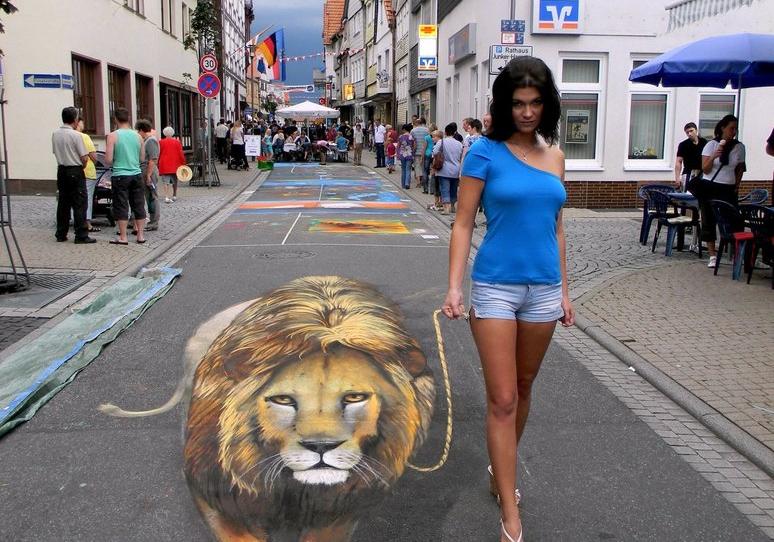| Iman Rappetti |
Under South African copyright laws it works like this:
1. is the street work eligible for copyright?
Well, yes if it is an original artistic work reduced to a material form. It needs to be original in the sense that it is the work of the artist's own skill labour and endeavours. In most cases, I would think that street art would qualify.
2. the law is not particularly discerning
The art work does not need to be particularly artistic, creative or even appealing.
3. the law is not xenophobic
Typically only works which are created by persons who are citizens of, domiciled or resident in South Africa or first published in South Africa will qualify for protection but for artistic works incorporated in a building (which would, in my opinion, include street art) the effect of the law is that even non residents or tourists on a creative frolic, are not excluded from qualifying for protection.
 |
| Source: 3D Street Art Advertising |
The law recognises both anonymous and pseudonymous works which means that even if Afro Leo was a street artist (as far fetched as that might be), the work would qualify for protection.
5. the law of copyright is neutral
This, in the sense that, it is recognised that a work eligible for copyright may also infringe another's work or another's rights and yet still be capable of protection eg an unauthorised photograph of a painting or a photograph that infringes a person's right to privacy. I mention this because in some cases the street artist may well be guilty of say trespassing or vandalism. This should, in my opinion, should not materially affect, in most situations, whether copyright exists or even if it is enforceable.
6. to right to copyright is a positive right
 |
| Source: Streetartnews.net |
7. there are certain exceptions
Although the right also includes the exclusive right to use the work in a TV program or film because the street art is likely to be in a public place, the law generally allows it to be reproduced in television programs or films.This is also the case where it is clearly background material or incidental.
 |
| Example: reproducing street art within the exceptions (pic courtesy of ENCA) |
8. rights in copyright are different from rights in the physical property
It is important that the street artist will own the copyright but not necessarily the artwork itself. There is a distinction here between the physical property upon which the artwork is displayed and the right in the copyright, as described.
9. the artist also has moral rights
These are rights which the artist has to protect against the distortion of the work and also, the right to be attributed as author of the work. These rights are quite powerful and are there to protect the reputation of the artist.
10. the practicalities of protecting street art
Despite the obvious protection available to street artists, most artists operate in a culture of anonymity where it would almost be uncool to be seen to be using formal methods to protect their work, and in many instances the process of doing so may risk exposing them publically or expose them to claims of trespassing or even vandalism. Though not all street art is created in these conditions, there is also a perception (rightly in some cases) that it is too expensive to litigate and a dearth of information on what to do. Here are a few tips:
a. once the street work is complete, take a picture of it and email it to yourself or keep it in a file with a date stamp. these steps will help prove copyright ownership.
b. if you notice that your work is being misused eg by a corporate, approach an attorney and make it known to the corporate through the attorney, that you are aware of your rights and of the infringement.
c. consider using the threat of litigation or of public disclosure to obtain a favorable settlement.
d. if necessary litigate but speak to your attorney about costs first as well as the likely damages that may be awarded.
You can catch this type of conversation and more on Iman Rappetti's Power Talk show at 10 every Wednesday where she hosts a legal insert.








